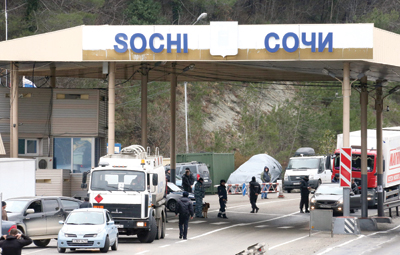Is sport a cause of social unrest, a tool to address inequality or a platform from which to communicate political injustice?
As we near the Sochi Olympic Winter Games, a long-simmering kettle of religious, political and social unrest has the potential to collide with the world’s largest peaceful gathering of nations. What should be universally viewed around the world as an exhibition of sport at the highest level of competition is being lauded as, among other things, “a festival of corruption.” Further, Sochi has become a lightning rod for social issues, such as anti-gay legislation, and security concerns in the wake of bombings in nearby Volgograd and threats from militant extremists in the Chechen region.
Since before the modern-day Olympiad, religious, political and social unrest has always weaved its way into the fabric and the shadows of sport. Whether it was rioting during the second North American qualifying round of the 1970 FIFA World Cup when El Salvador and Honduras were at war, or the India-Pakistan cricket truce, sport and politics have always made for interesting global bedfellows.
More recently, those who feel they have been repressed have gained a greater voice through social media, political means or sheer terror, and they are increasingly using the platform of global sport to forward their cause.
 |
Photo by: GETTY IMAGES
|
Using global sport to ignite a nation, or to advance a company’s business objectives through sponsorship, is not a strategy for the squeamish or faint of heart. In spending an estimated $51 billion, Russia is incurring very certain costs today for very uncertain future benefits. So, too, are the Olympic and Sochi 2014 sponsors.
 |
December terrorist attacks in Volgograd (top) have raised security concerns in Sochi.
Photo by: AP IMAGES
|
Hosting global sport has the opportunity to catapult a city or country by leaps and bounds. It serves as a catalyst for development projects like stadiums, transportation and hotel construction, reallocation of land use, fortification of emergency services, foreign investment, image overhaul, and more.
When other social factors combine, a true barometer for gauging the full impact on sport and society is formed. This includes “softer measures” that have equal, if not greater, economic impact on a host nation and its residents, such as the psychological index of a nation’s citizenry, education, decreases in mortality rates, and even sustainability and legacy programs. These are equally profound, if not more so, in showcasing the true effects of sport on society.
The halo effect this has on sponsors can exponentially lift brands to new levels of recognition and reputation, create new market growth, gain government influence, and much more.
However, today, hosting multinational sporting events seems to be less about chasing utopian dreams and more about preparing or preventing the grave challenges of social unrest. The latest news out of Sochi has again reminded us that the potential for lifting a nation through an Olympic association comes with great risk. Even more challenging for the brands underwriting the Games is that many of these risks are, almost entirely, beyond the control of sponsors.
Companies face a certain level of vulnerability they must be willing to accept when hitching their brands and associated messages to the global sports wagon. If marketers want to bask in the glow of Olympic glory, they must also be willing to face the scrutiny their brands’ connections may have to countries with behaviors or laws their target consumers might find unusual at best, abhorrent at worst.
Now, more than at any time in history, global sport is being awarded to emerging markets around the world. Emerging markets account for half of global GDP. Perhaps even more importantly, they’re home to 85 percent of the world’s population. For companies seeking to ensure brand relevance for generations to come, securing a market position in these emerging markets is critical to future growth and success.
But how can companies most effectively build their brands through global sport sponsorship while mitigating the risks associated with economic, political and social unrest?
Brands must be aware of and understand these emerging markets at a local level, not just consumer attitudes and habits, but also the social and political landscape. Social norms that businesses take for granted in developed markets aren’t always there in emerging markets.
Brands attempting to leverage sport-related investments in these sometimes volatile markets must connect to their audiences, from consumers, to local employees, to government officials, in a manner that is relevant to and respectful of history and culture. By cultivating a deep understanding of local communities and the driving factors behind social and cultural trends, brands can best position themselves to be invited to the party rather than be seen as crashing it. Doing so requires brands to become more nimble and responsive in real time to an ever-changing marketplace, varied consumers, and disparate cultures.
Brands seeking to limit the physical risks of engaging in sport, such as terror plots against major sporting events, have a unique challenge. Sport is not the cause of unrest but it can be a magnifier for what lies beneath the surface. And while it is unreasonable for the public to assume that sport can persuade governments to change their human rights policies or for a factional terrorist group to lay down its arms, sport has the capability of being a great unifier. The Olympic Games, despite a history that has significant blemishes, deserves credit for its commitment to exemplify inclusion over bias. For brands, the opportunity lies in seizing upon and amplifying the uniting qualities of global sport and becoming a direct contributor to this narrative, rather than an impassive guest.
And as we look toward Sochi, the organizing committee, brands and fans should take stock of the many opportunities offered within global sport — but be ever-mindful of the politics and pitfalls.
David Fuller (david.fuller@theglideslope.com) is a founding partner of GlideSlope.






